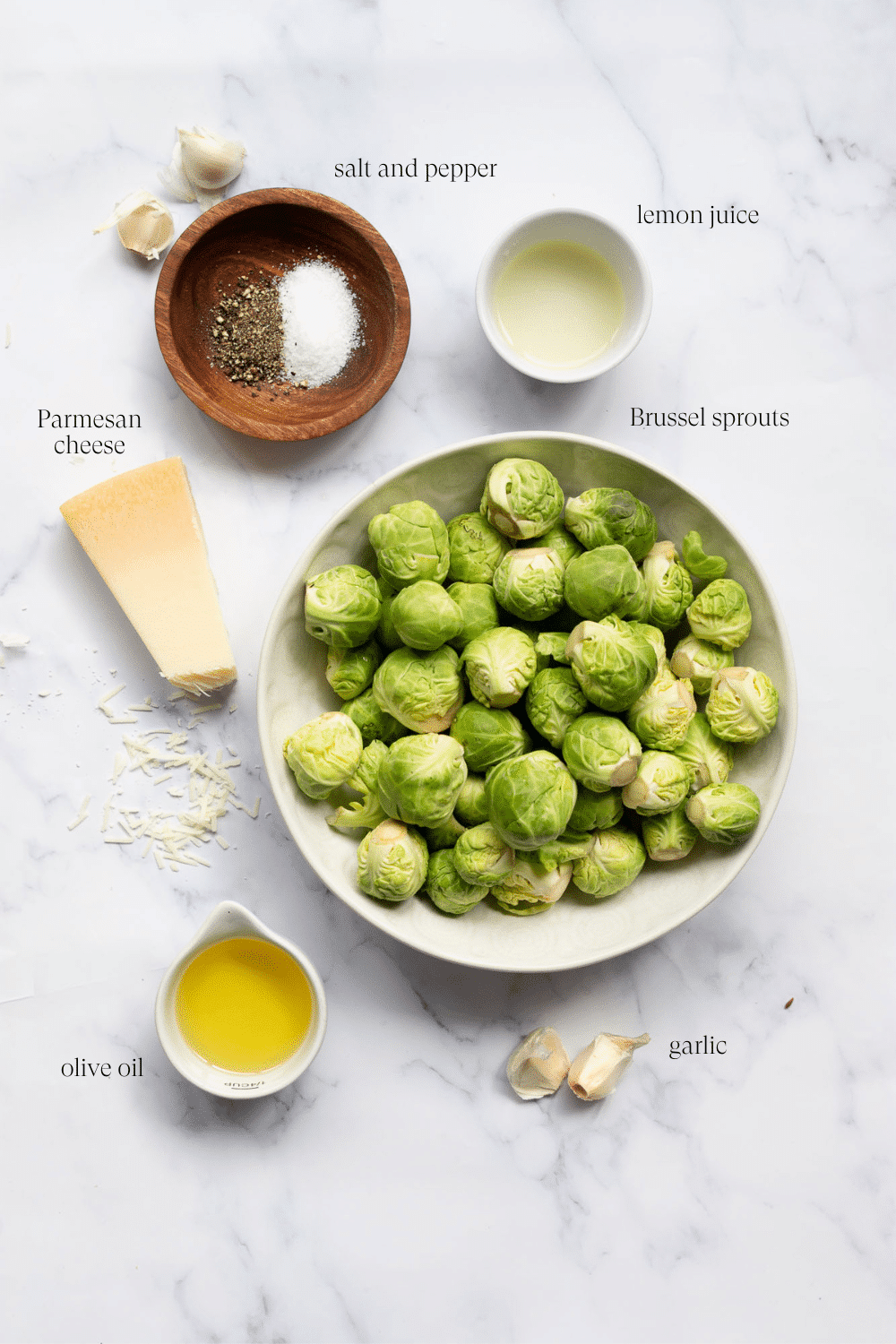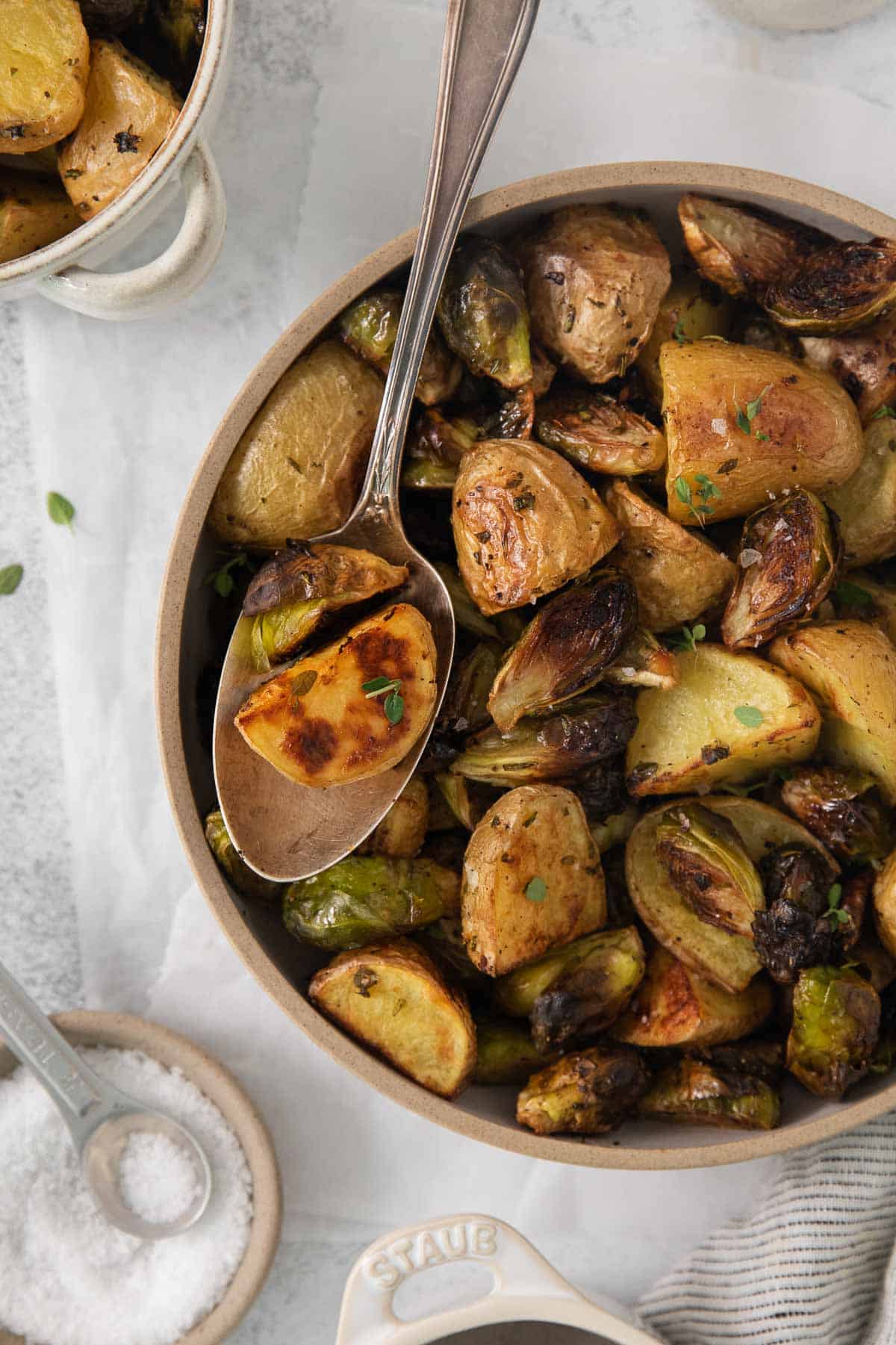Physical Address
304 North Cardinal St.
Dorchester Center, MA 02124
To clean Brussels sprouts, first remove any loose or damaged outer leaves, then rinse them under cold water. (16 words) Brussels sprouts are a nutritious and delicious vegetable that can be enjoyed in various dishes.
Whether you’re roasting or steaming them, it’s essential to start with clean sprouts. Cleaning Brussels sprouts is a simple process that involves removing any loose or damaged outer leaves and rinsing them under cold water. In this guide, we’ll walk you through the steps to ensure your Brussels sprouts are clean and ready to cook.
So, let’s get started! (73 words)

Credit: www.marthastewart.com
Cleaning Brussels sprouts is vital for ensuring the removal of dirt and bacteria that may be present on their outer leaves. This step is crucial in maintaining food safety and overall cleanliness in your kitchen.
Properly cleaning Brussels sprouts is an essential step before you can enjoy their delicious flavor and reap their health benefits. These mini cabbage-like vegetables tend to harbor dirt, debris, and potential contaminants, which can impact both the taste and safety of your dish. By taking the time to thoroughly clean Brussels sprouts, you not only ensure a cleaner and tastier meal but also safeguard your health. Let’s explore how to clean Brussels sprouts effectively.
The first step in cleaning Brussels sprouts is to remove any dirt and debris that may be trapped within their tightly packed leaves. To do this, follow these simple steps:
Remember: It is important to use cold water for rinsing Brussels sprouts, as hot water can cause them to wilt and lose their crispness.
After removing the dirt and debris, the next step is to eliminate any damaged or discolored outer leaves, as well as the tough stalks at the base of each sprout. Follow these steps to ensure you’re left with clean and tender Brussels sprouts:
By removing the dirt, debris, outer leaves, and tough stalks, you can ensure that your Brussels sprouts are clean, fresh, and ready to be cooked according to your chosen recipe. Enjoy their vibrant flavor and reap the nutritional benefits with peace of mind, knowing that you’ve taken the necessary steps to clean them properly.

Credit: www.primaverakitchen.com
When it comes to preparing fresh Brussel sprouts, ensuring they are thoroughly cleaned is essential. The dirt and debris hiding in the leaves can not only affect their taste but also pose a health risk. To help you with this crucial step, here are some expert tips for cleaning Brussel sprouts.
One of the simplest and most effective ways to clean Brussel sprouts is by soaking them in water. Start by filling a large bowl or sink with lukewarm water. Submerge the sprouts and gently agitate them to dislodge any dirt or insects that may be hiding in the leaves. Let them soak for a few minutes before giving them a final rinse under running water.
For an extra level of cleanliness, you can use a vegetable brush to scrub the Brussel sprouts. This method is particularly useful for removing stubborn dirt or debris that might be trapped between the layers of leaves. With the sprouts in hand, hold them under running water and gently scrub each one using a vegetable brush. Be sure to brush all sides to ensure a thorough clean.
Vinegar is a natural and effective cleaning agent that can help remove bacteria from Brussel sprouts. To make a vinegar solution, mix one part vinegar with three parts water in a large bowl or sink. Place the sprouts in the solution and let them soak for a few minutes. Afterward, give them a thorough rinse under running water to remove any vinegar residue.
Follow these expert tips for cleaning Brussel sprouts to ensure they are free from dirt and debris. By taking the time to properly clean your sprouts, you can enjoy their delicious taste and maximize their nutritional value.
Learn simple tricks to enhance the flavor and texture of Brussel sprouts for a delicious meal. Discover effective ways to clean Brussel sprouts and make them taste amazing.
One of the key tricks to enhance the flavor and texture of Brussels sprouts is to properly trim and halve them. Trimming off the tough outer leaves and tough stem not only improves the overall appearance of the sprouts, but also ensures that they cook evenly and become tender with a delightful bite.
Start by removing any yellowed or damaged leaves from the sprouts. Then, with a sharp knife, carefully trim a small portion of the stem. This will make it easier to remove the individual leaves and halve the sprouts.
Halving the sprouts is particularly important because it creates more surface area, allowing for better caramelization when sautéing or roasting. This caramelization brings out a natural sweetness and adds a delightful crispness to the sprouts.
Steaming Brussels sprouts before cleaning is a lesser-known trick that can truly elevate their flavor and texture. Steaming helps to loosen any dirt or debris that may be stuck between the leaves, making it easier to clean them thoroughly.
To steam your sprouts, place them in a steamer basket over a pot of boiling water. Cover and steam for about 5-7 minutes, or until they are just tender when pierced with a fork. Be careful not to overcook them, as this can result in mushy sprouts.
Once steamed, remove the sprouts from the steamer basket and let them cool slightly before cleaning. This will ensure that you don’t burn yourself while handling the hot sprouts.
Cleaning the sprouts after steaming is a breeze. Simply run them under cold water or give them a quick rinse in a colander. Gently pat them dry with a kitchen towel or paper towel before proceeding with your chosen cooking method.
By steaming the sprouts before cleaning, you not only enhance their flavor and texture, but also ensure that they are thoroughly cleaned and ready to be cooked to perfection.

Credit: meaningfuleats.com
To clean and prepare brussel sprouts, start by rinsing them under cold water. Then, trim off the stem and remove any discolored or damaged outer leaves. Cut an “X” shape into the stem end to help them cook evenly. Finally, they are ready to be cooked or roasted.
Soaking brussel sprouts in salt water is optional. It can help to remove any dirt or insects. To soak them, fill a bowl with water and add a tablespoon of salt. Let them sit for 10-15 minutes before rinsing and cooking.
To get rid of bugs on Brussels sprouts, remove them by hand or use a strong spray of water. Apply organic insecticides like neem oil or insecticidal soap. Regularly inspect the plants for any signs of infestation and take immediate action to prevent further damage.
To harvest and clean brussel sprouts, start by cutting the sprouts off the stalk using a sharp knife. Rinse them under cold water, removing any outer leaves that are damaged or discolored. Trim the stem ends and make a small cross incision on the base of each sprout to help them cook evenly.
To clean Brussels sprouts, remove any loose outer leaves and trim the stem. Rinse them under cold water to remove dirt and debris.
Yes, you can eat the leaves on Brussels sprouts. They are edible and often tender. Just make sure to wash them thoroughly before using.
To remove bitterness from Brussels sprouts, blanch them in boiling water for a few minutes, then plunge them into ice water to stop the cooking process.
It’s not necessary to soak Brussels sprouts before cooking, but you should rinse them under cold water to clean them properly.
Store Brussels sprouts in a plastic bag in the refrigerator, ensuring they are dry. They can last up to a week when stored this way.
Yes, you can freeze Brussels sprouts. Blanch them first, then place them in an airtight bag or container before storing them in the freezer.
To wrap up, cleaning Brussel sprouts is a straightforward process that can enhance your cooking experience. By following these simple steps and tips, you can ensure that your sprouts are free from dirt and pesticides, resulting in a delicious and nutritious meal.
Remember to trim, soak, rinse, and dry the sprouts effectively. With a clean and fresh batch of Brussel sprouts, you’re ready to explore endless possibilities in your culinary endeavors. Happy cooking!